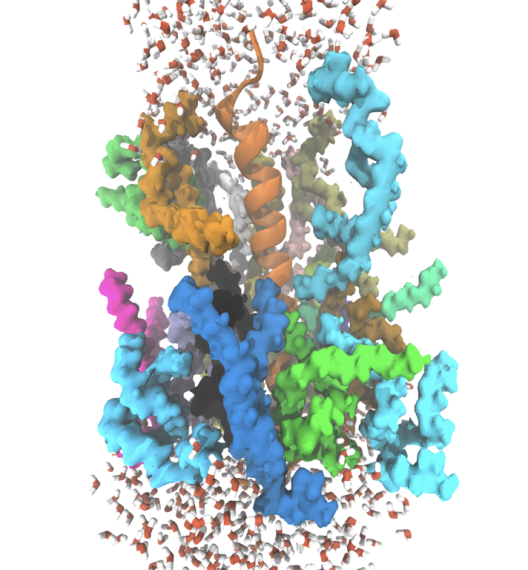
Simulation of self-organisation effects
In our group Molecular Dynamics (MD) and Monte Carlo (MC) simulations for different experimentally relevant soft nanomaterials are performed.
- Domain formation in lipid bilayers: The formation of domains in lipid membranes is a key requisite for signal-processing in cells. For this purpose we study lipid mixtures with and without transmembrane domains [1,2]. Extensive Molecular Dynamics (MD) simulations are performed on the atomistic as well as the coarse-grained level (MARTINI) .In particular, physical properties related to the domain formation are analyzed in detail. By studying the individual enthalpic and entropic thermodynamic contributions, a closer understanding of experimental observations such as the emergence of the gel-to-liquid transition is possible. Furthermore, we are currently developing a lattice model (see [3] for first results) which allows one without any further adjustable parameters to simulate lipid membranes on experimentally relevant length- and time scales.
- Non-equilibrium structure formation on substrates: Of particular interest is the structure formation, relying on non-equilibrium effects. It is studied via MD and MC simulations as well as by analytical calculations. Such effects are observed, e.g., in the case of an external flux of particles on prepatterned substrates [4] or, for liquid droplets, via fast switching of the substrate-liquid interaction.
- Vesicle formation of amphiphilic molecules. A very efficient model of amphiphilic molecules has been developed in our group which allows us to study the structure formation on large length and time scales. Among others, the underlying properties of frame-guided assembly, as promoted by the Liu-group (Tsinghua University), is currently studied.

